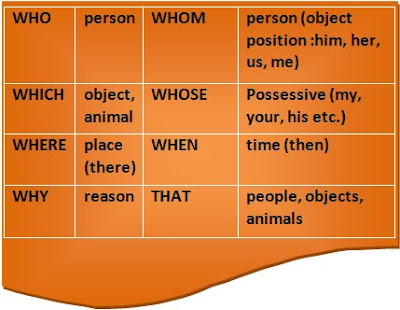Posts Tagged ‘non-defining clauses’
- In: 2011/2012 | 3rd Professional | Home
- Leave a Comment
Dear students,
We talked about the relative clauses, and here is a presentation with some exercises.
And some more online exercises here.
Good work!!! 😉
Relative pronouns and clauses
Posted on: 22/01/2012
Dear students,
As we’ve been talking about relative clauses, here is some information and exercises.

What is a relative clause?
Definition
A relative clause is a clause which describes the referent of a head noun or pronoun.
It often restricts the reference of the head noun or pronoun.
How to use a relative clause:
Use relative clauses to provide extra information. This information can either define something (defining clause), or provide unnecessary, but interesting, added information (non-defining clause).
Relative clauses can be introduced by:
a relative pronoun: who (whom), which, that, whose
no relative pronoun: Ø
where, why and when instead of a relative pronoun
You need to consider the following when deciding which relative pronoun to use:
Is the subject or object or possessive of a relative clause?
Does it refers to a person or an object?
Is the relative clause a defining or non-defining relative clause?
NOTE: Relative clauses are often used in both spoken and written English. There is a tendency to use non-defining relative clauses mostly in written, rather than in spoken, English.
Exercises:
Relative pronouns 1
Good work!!!